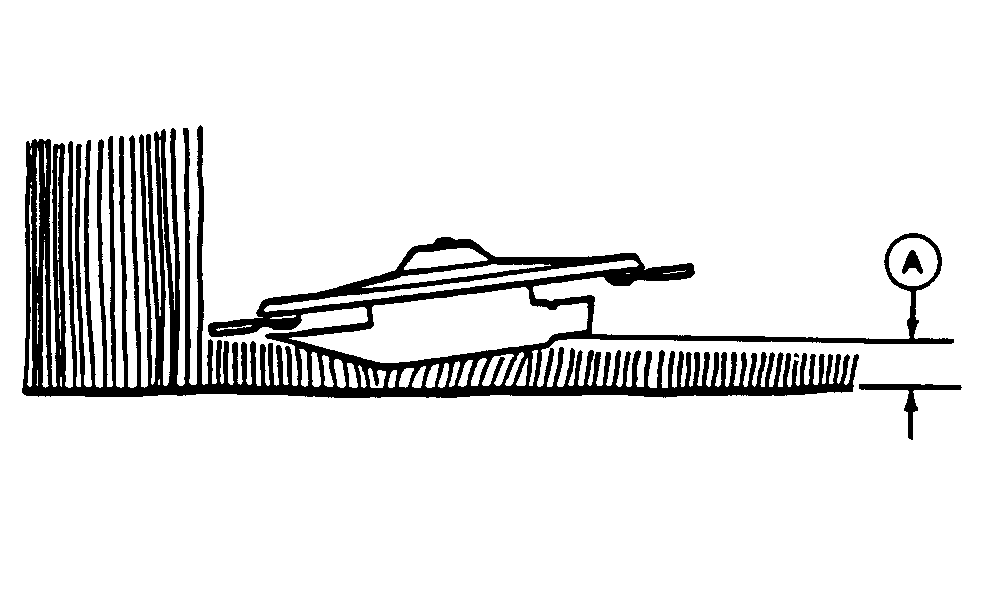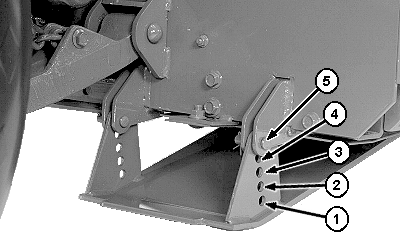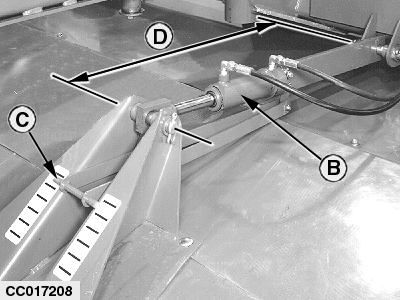Adjusting Cut HeightIMPORTANT: A higher height of cut will minimize machine damage in rocky conditions. 1. The cut height (A) is determined by the angle of cutterbar and position of side gauge shoes. Select cut height from chart below and adjust gauge shoes, as necessary. (See Adjusting Side Gauge Shoes in this section.) NOTE: The information in chart is based with machine on level ground.
2. Extend or retract hydraulic tilt control cylinder (B), using tractor hydraulics, to adjust cut height (A).
IMPORTANT: Operating at flatter angles will reduce cutterbar maintenance. An initial cylinder measurement (D) of 730 mm (28.75 in.) is recommended. 3. Adjust platform float, as necessary. (See procedure in this section.) |
|
|||||||||||||||||||||||||||
OUCC006,0000286 -19-08NOV00-1/1 |


